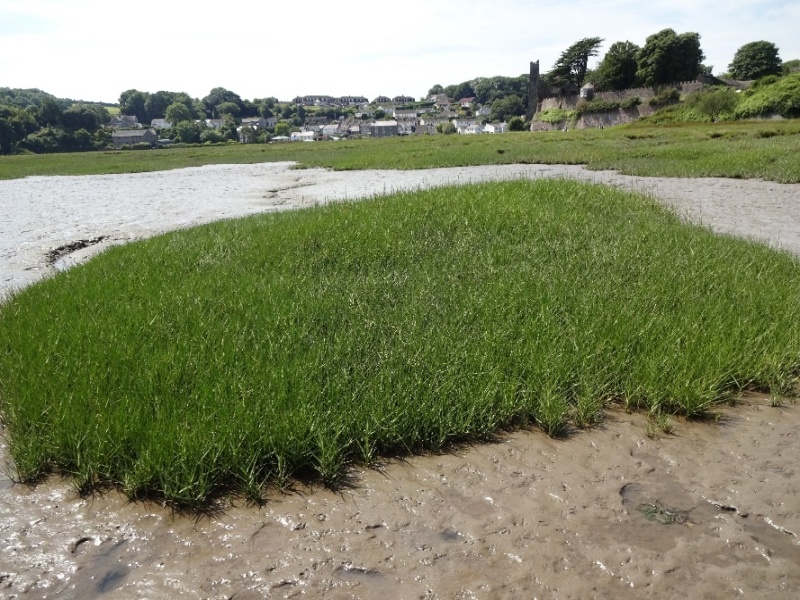T.J. van Veelen1,2*, H.M. Nepf3, S.J.M.H. Hulscher1, B.W. Borsje1
1 University of Twente; 2 Swansea University; 3 Massachusetts Institute of Technology
*corresponding author:
Introduction
If we are to rely on salt marshes for nature-based coastal protection, we must understand how they expand and retreat. Salt marshes are vegetated intertidal wetlands, which are commonly found in estuaries and on sheltered coastlines. The area at the seaward edge is known as the pioneer zone. This region is characterised by patchy vegetation, fine sediment, and frequent tidal inundation. Critically, it is also the region in which salt marsh expansion and retreat are first observed. Sediment accretion is a key process for expansion in this complex setting alongside other morphological and biological drivers.
The presence of vegetation in wave-current conditions modifies the sediment transport dynamics compared to a bare bed (e.g. a mudflat). Vegetation changes flow patterns, dampens waves, and drives turbulent eddies. These affect the flow velocities, shear stresses, and diffusivity that control sediment transport (Lou et al, 2022) and deposition (Xu et al, 2022). In this study, we will unravel how pioneer vegetation affects spatial and temporal sediment deposition patterns under wave-current conditions using flume experiments. Our aim is to understand how deposition rates depend on wave, current, vegetation and sediment conditions.

Figure 1: Pioneer salt marsh in the Taf Estuary, Wales, UK (own photo).
Methods
The experiments will be conducted in the Nepf Environmental Fluid Mechanics Lab at the Massa-chusetts Institute for Technology, USA. The artificial vegetation is inspired by pioneer specie Spartina anglica. We will feature a realistic range of current (0-0.2 m/s), wave (height: 0-0.15 m), vegetation, and sediment (grain size: 40-100 µm) conditions based on field data in northwestern Europe (e.g. Hu et al., 2021). Our results will enable new modelling tools and can in the future be applied to the understand deposition patterns as observed in the field after taking relevant scale differences into account.
References
Hu., Z., Willemsen, P.W.J.M., Borsje, B.W., Wang, C., Wang, H., van der Wal, D., Zhu, Z., Oteman, B., Vuik, V., …, Bouma, T.J. (2021). Synchronized high-resolution bed-level change and biophysical data from 10 marsh–mudflat sites in northwestern Europe. Earth Sys. Sci. Data, 13(2), 405-416.
Lou, S., Chen, M., Ma, G., Liu, S. & Wang, H. (2022) Sediment suspension affected by submerged rigid vegetation under waves, currents and combined wave–current flows. Coats. Eng., 173, 104082.
Xu., Y., Esposito, C.R., Beltrán-Burgos, M. & Nepf, H.M. (2022). Competing effects of vegetation density on sedimentation in deltaic marshes. Nat. Comm., 13(1), 4641.
I. Surname1*, F.N. Another-Surname2 , Y. Next-Surname2
1 University Name, Country; 2 Organization Name, Country
* Corresponding author: mail.name@organization.org


